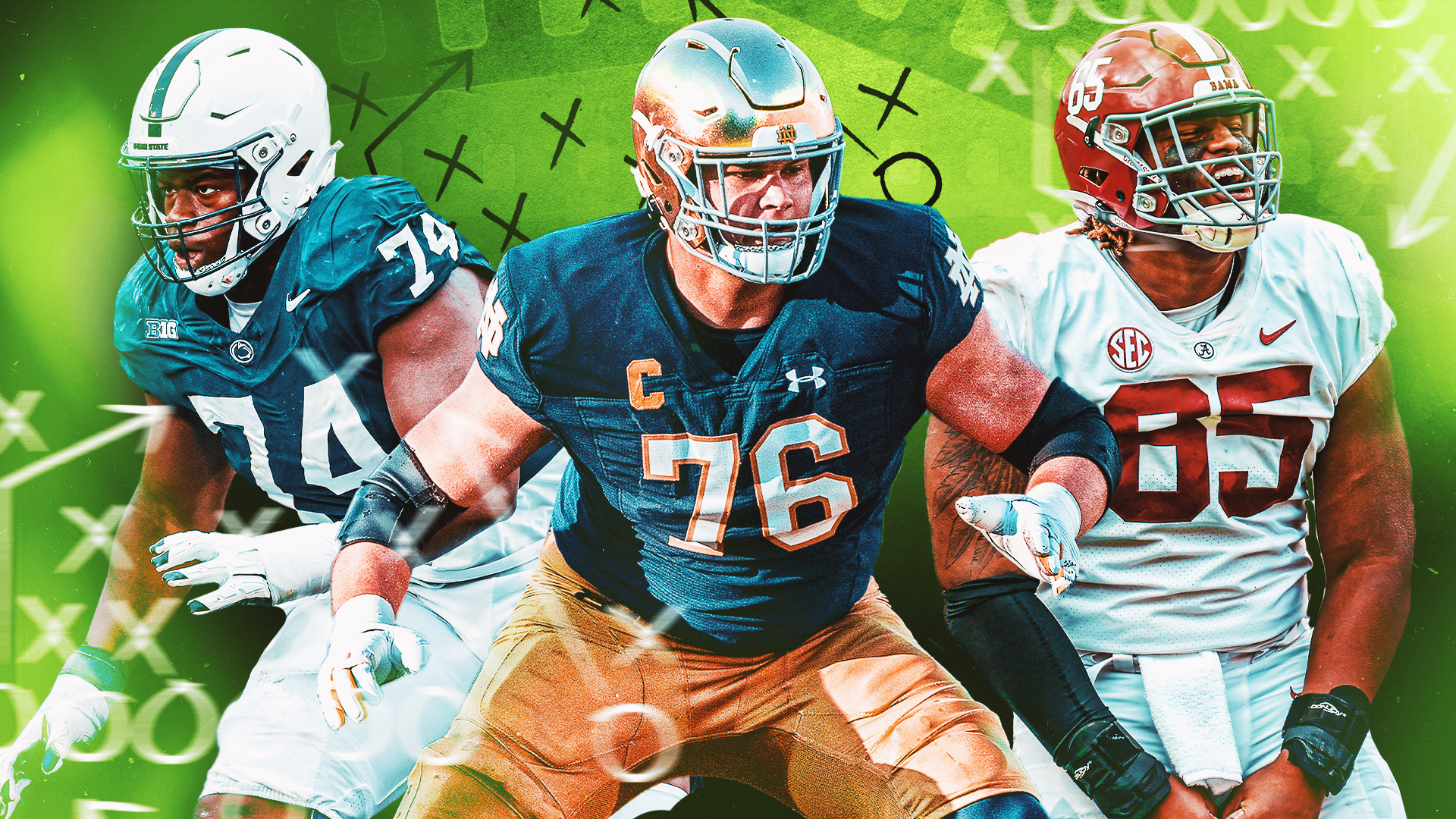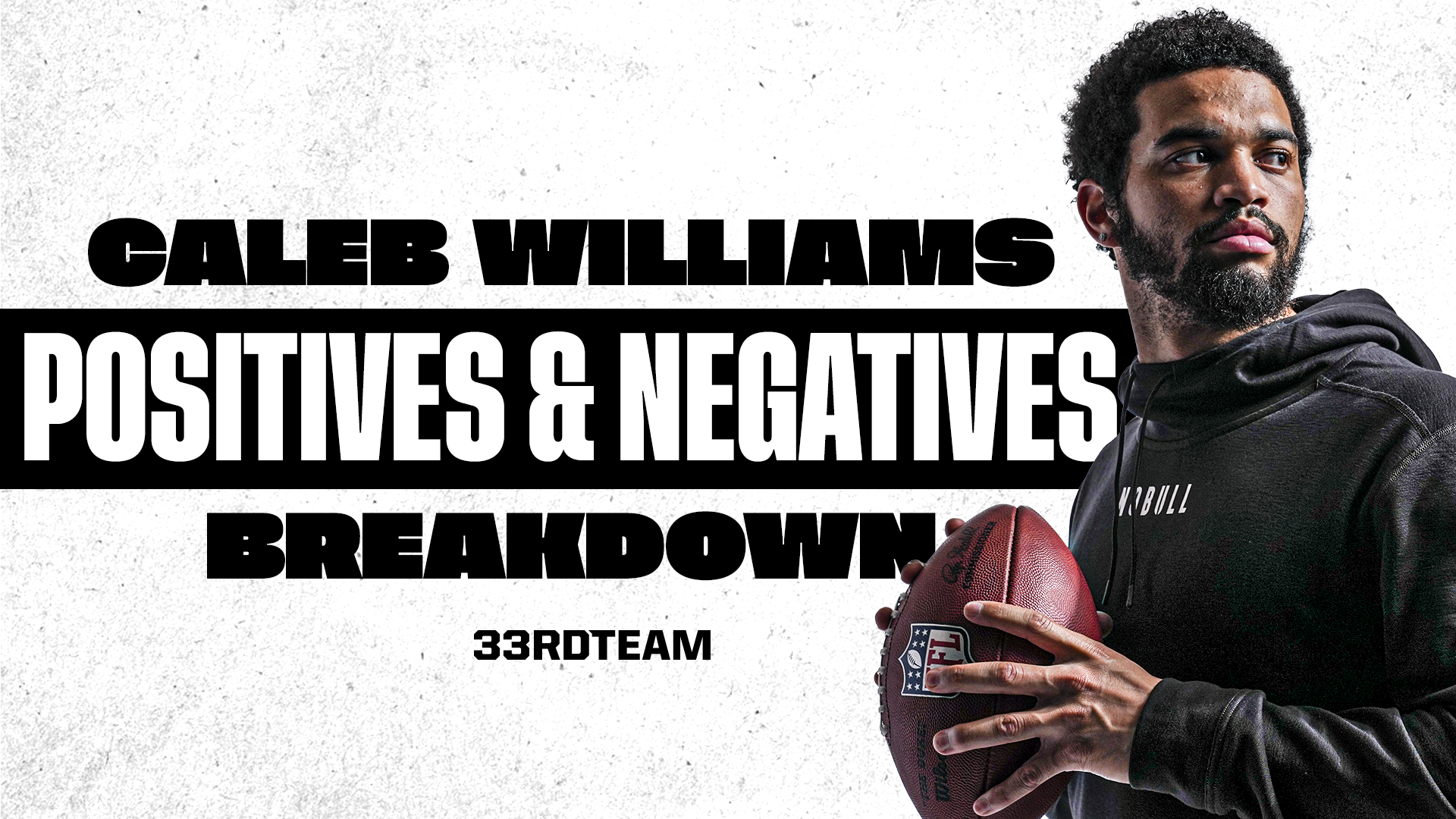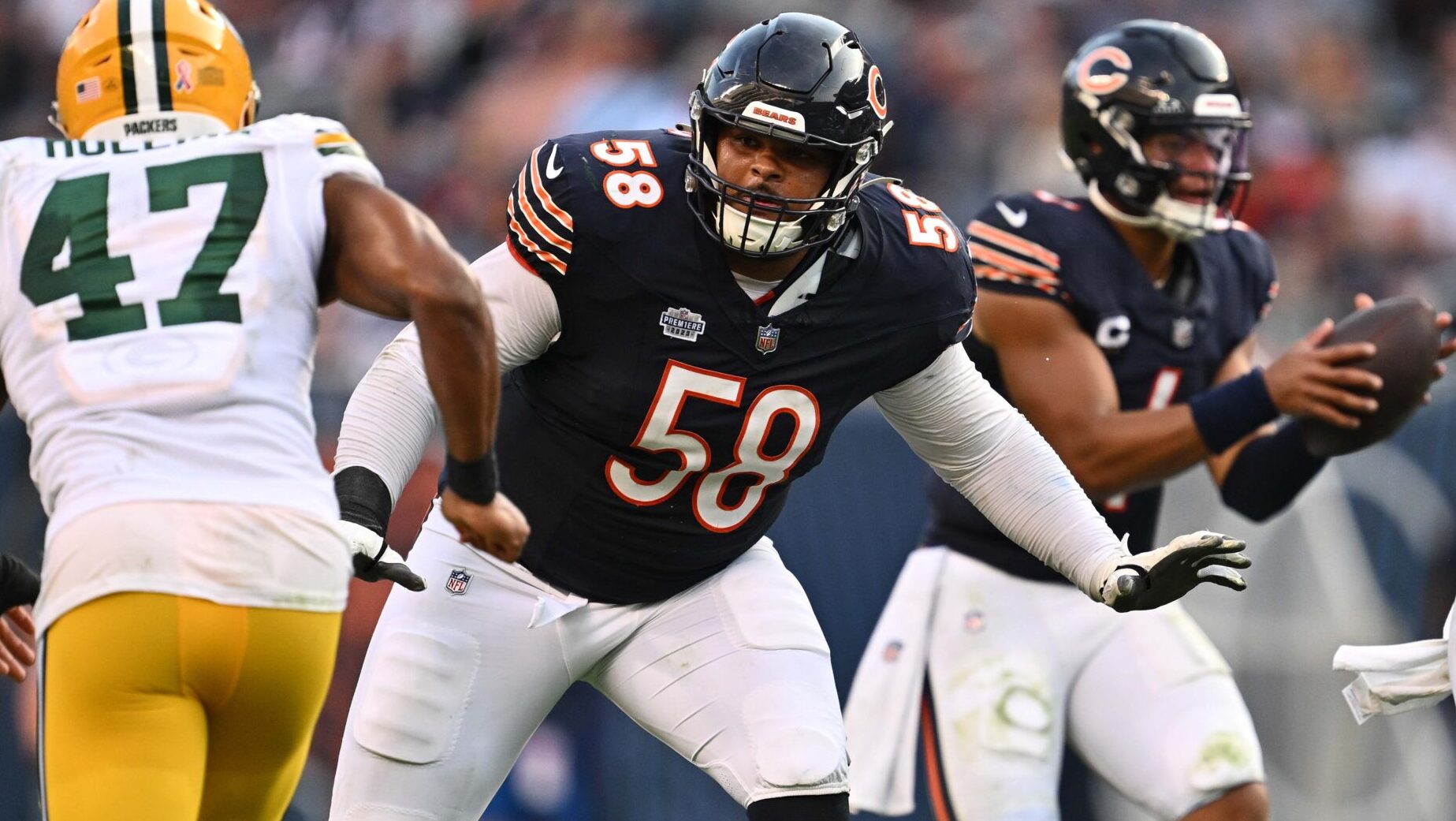Breakdowns
12/1/21
7 min read
Inside The Mind of An NFL Tight End
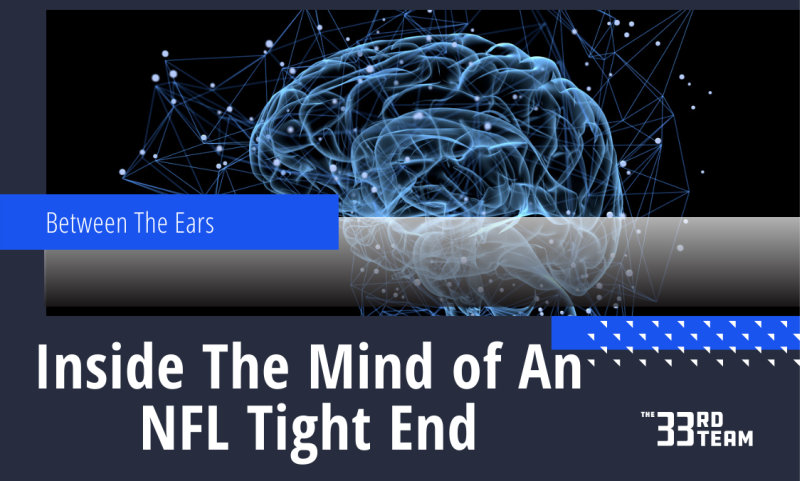
In partnership with Athletic Intelligence Measures, The 33rd Team features a weekly article on Sports Psychology and its effect on performance within the sport of football.
Athletic Intelligence Measures consists of three individuals, Drs. Scott Goldman, Jim Bowman, and Alex Auerbach. Together, the triumvirate spent 15 years creating the Athletic Intelligence Quotient (AIQ), which identifies an athlete’s mental strengths and weaknesses to aid coaches, management, and player personnel.
Each week, we discuss an important aspect of Sports Psychology with Dr. Goldman that can help football coaches, management, and player personnel learn what Sports Psychology really is, and learn how best to put it into practice.
After discussing what the AIQ is in our previous two articles — Intelligence as a Competitive Advantage in Sports and 3 Ways NFL Teams Can Promote Mental Health — Dr. Goldman shares a de-identified AIQ report and how it helps teams get the most out of their athletes.
Finding and developing talent at a high level is the bread and butter of a successful NFL organization. One secret to successful drafting and player development is to have a comprehensive athletic profile on every player.
Teams spend years reviewing film, interviewing coaches, and more to have the clearest picture of the players. Recently, some teams (including 3 Super Bowl winners) have added the Athletic Intelligence Quotient (AIQ) to boost their evaluation process.
The AIQ measures a player’s sport specific intelligence. It identifies a player’s mental strengths and weaknesses, and provides position specific analysis and recommendations so a team learns how to optimize a player as well as identify which players fit best in their scheme.
Scores are broken down into a Full-Scale score, four broad abilities, and 10 narrow abilities.
“So, think of it like, the full scale score is a country, the four broad abilities are states, and the 10 narrow abilities are cities,” Dr. Scott Goldman says. “The way I describe it is that the abilities have shared qualities but also unique attributes. Like California and Alabama, they both speak the same language, but their residents may have different accents, so it sounds slightly different.”
As a part of the pre-draft process, teams work with AIM to dissect player profile results and understand their strengths and weaknesses. Teams can also use the AIQ for talent development. It happens in two separate, but critical phases: the pre-draft phase, and the post-draft phase.
What does an AIQ report look like? The de-identified report below showcases the unique cognitive abilities of a Pro Bowl NFL tight end, who will be referred to as “Player X.”
For Player X, the pre-draft phase consisted mainly of comparing his athletic intelligence profile to other tight ends from his draft class, as well as benchmarking his AIQ profile to other tight ends around the league.
“During our Pre-draft AIQ meeting, we were discussing the team’s top 100. They were focused on selecting a tight end and wanted to know the goodness of fit between the player’s AIQ profile and how they use tight ends in their system,” Goldman said. “The team invested in the AIQ to help them identify which players could learn and cognitively fit into their system as well as quickly digest their playbook in order to contribute right away.”
Once the team was off the clock and the player was on campus, the conversation shifted.
“Post-draft, they asked, ‘How do we develop him? How do we maximize his talent on the field and in installs? How do we teach him best? And, based on his cognitive abilities, what game situations are best for the player and the team’s success?’ These questions allow the team to better understand how to optimize a player’s development.
“So, for example, if a tight end’s cognitive ability to identify the defensive coverage and then select the correct route from a multiple option route tree was a strength, the coaches could design plays that utilize his cognitive talents.”
The four broad abilities in the AIQ are Visual Spatial Processing, Reaction Time, Decision Making, and Learning Efficiency.
Within those four categories are 10 narrow abilities listed below.

Though the Full-Scale Score for Player X of 98 would be considered average, the AIQ identified several notable strengths and a few notable weaknesses. In other words, the best gains come from the details.
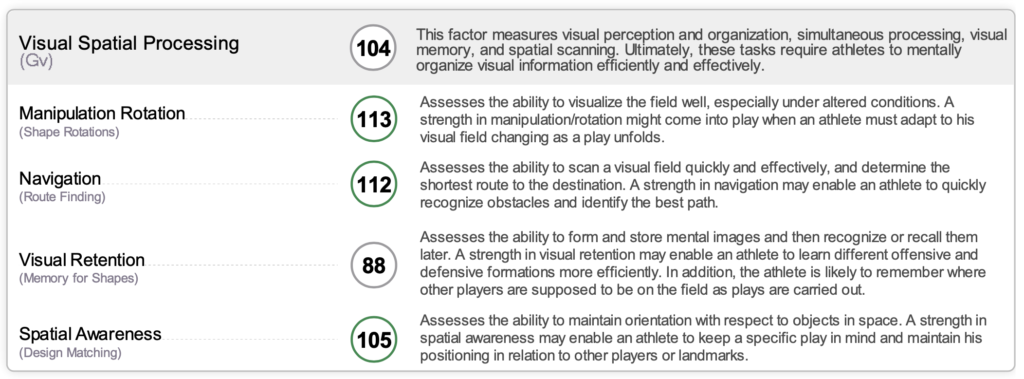
Player X scored 104 on Visual Spatial Processing, performing slightly above average overall. He showed notable strengths in Navigation, Manipulation Rotation, and Spatial Awareness.
Combining these strengths suggests the player would be successful in following the flow of play, identifying an efficient route to a location, and then positioning himself in that spot so he is open between defenders. Thus, in the pre-draft conversation, it was concluded Player X had strong scores in the areas most needed for the TE position.
However, this player did show notable weakness in Visual Retention, which suggests that he may struggle with formation photographs as a learning tool. In the post-draft meeting, coaches were instructed to teach Player X with verbal instructions and ask him to tie those instructions back to the larger play concepts.

Player X scored a 93 in Reaction Time, putting him in the average range. While he was fairly accurate in both his Reaction Time - Simple and - Distract, he did not respond quickly on the reaction time task when distractors were introduced. In other words, he slowed down to ensure his accuracy when false information was present.
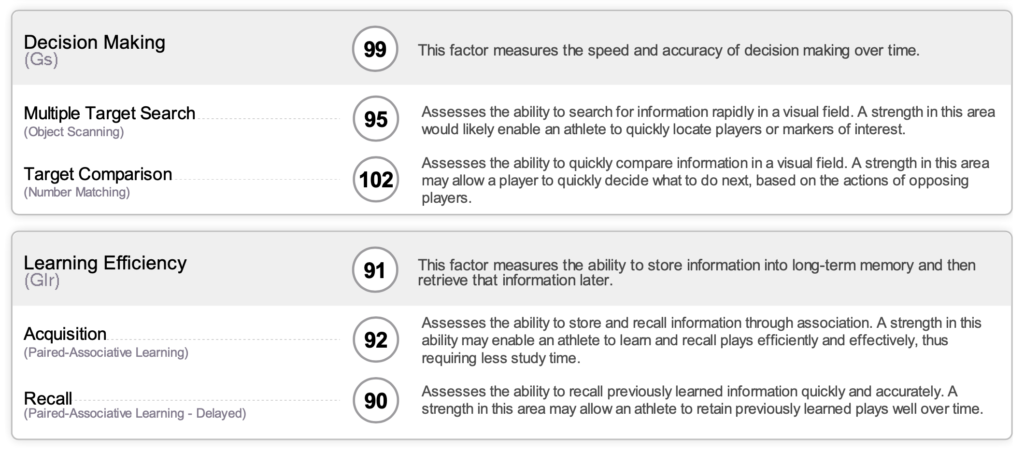
As far as Decision Making is concerned, Player X showed average speed and accuracy. Meanwhile, his Learning Efficiency was identified as low average, suggesting that he may need additional reps to learn the playbook compared to his peers.
The AIQ report also includes analysis, recommendations, and a coaching tip sheet with specific advice on how to get the most out of this player.
One of the tips based on Player X’s strengths suggested that he may be able to identify what holes could develop in a defense, and thus may be reliable in determining his own spacing in pass concepts as coaches see fit.
How has the AIQ score for Player X helped his team develop him into one of the league’s top tight ends?
“I was told by the head coach, offensive coordinator, and position coach that the AIQ was incredibly valuable and that it changed how they developed their game plan for the tight end and how they taught him. It made the installs better and improved play calling. They told me it provided clarity, direction, and confidence in what they were doing with him.
“Prior to incorporating the AIQ, the coaches said they were struggling with certain aspects of what the player was doing, then they digested the information and said, ‘Oh, now we get it.’ It was really connecting the dots for them.
“One other interpretation from the report was that the player might struggle with catching passes in congested areas. In the pre-draft session, the General Manager said there was no film to confirm it.
“I said, ‘Perhaps the university ran a system that prevented the tight end from being in contested situations. Or, maybe he was a superior talent compared to his NCAA competition and the cognitive weakness will be revealed against NFL talent when the game is faster and more complex.’ And then, sure enough, in his rookie year he really struggled in that specific domain.
“That’s when the head coach, tight end coach and offensive coordinator came back and said, ‘Hey, can you walk us through what this data means and what we can do to solve this issue?’ That’s when we started to develop game plans that were different, installed practicing habits and designed routes that were more towards his cognitive strengths while finding ways to offset some of those weaknesses.”
While no single piece of information can assure a player’s success, having an athletic intelligence profile that identifies a player’s strengths and weaknesses is extremely helpful for coaches and front office executives when it comes to evaluating a player pre-draft, assimilating a player into your scheme, and emphasizing a player’s strengths.


